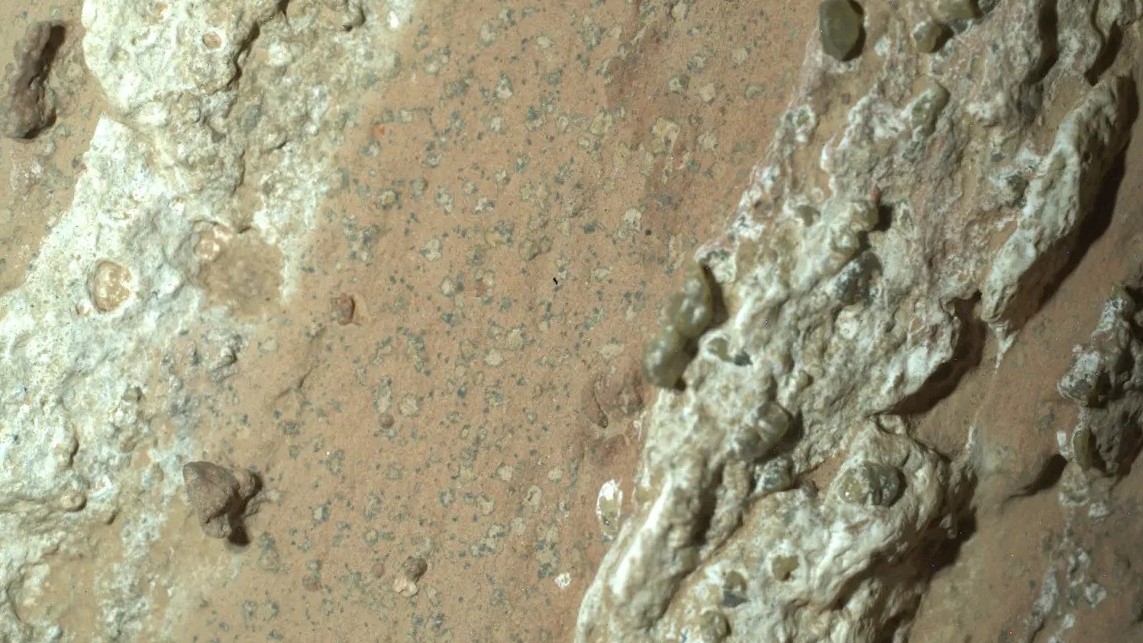
NASA's Perseverance rover may have discovered evidence of past life on Mars, after spotting a strange, speckled rock with signs of chemistry that could have supported ancient microbes.
The rover discovered the arrow-shaped rock, nicknamed Chevaya Falls, along the northern bank of Neretva Vallis, an ancient, now desiccated river that once rushed into Mars' Jezero Crater.
The rover analyzed the rock, revealing a veiny, sedimentary material crammed with organic compounds, evidence of the movement of water, and flecks of leopard-like spots from chemical reactions, which could have been used by ancient microbes for energy.
"These spots are a big surprise," David Flannery, a member of the Perseverance science team and an astrobiologist at Queensland University of Technology in Australia, said in a statement. "On Earth, these types of features in rocks are often associated with the fossilized record of microbes living in the subsurface."
Perseverance is a key part of NASA's $2.7 billion Mars 2020 mission. Since it arrived on Mars, the rover has been searching for signs of ancient life on the Martian surface by trundling across the 30-mile-wide (50 kilometers) Jezero crater, collecting dozens of rock samples for eventual return to Earth.
The rover found the speckled rock on a region of the Red Planet that was once warmer and wetter, meaning that any signs of ancient life would appear fossilized inside the rocks there. Scans, conducted by Perseverance's Scanning Habitable Environments with Raman and Luminescence for Organics and Chemicals (SHERLOC) instrument, showed that the rock contained carbon-based molecules, alongside bands of reddish haematite that featured spots of iron and phosphate.
Related: First Martian life likely broke the planet with climate change, made themselves extinct
It's still a mystery whether the carbon found within once belonged to ancient life and the spots are its traces, or whether they were produced by non-biological processes, the researchers said.
"Cheyava Falls is the most puzzling, complex, and potentially important rock yet investigated by Perseverance," Ken Farley, a Perseverance project scientist at Caltech in Pasadena, said in the statement.
"On the one hand, we have our first compelling detection of organic material, distinctive colorful spots indicative of chemical reactions that microbial life could use as an energy source, and clear evidence that water, necessary for life, once passed through the rock," he said. "On the other hand, we have been unable to determine exactly how the rock formed and to what extent nearby rocks may have heated Cheyava Falls and contributed to these features."
Whatever the answer may be, it likely won't come anytime soon. To bring Perseverence's precious cargo to Earth for analysis, the European Space Agency (ESA) originally proposed the use of its Sample Retrieval Lander — a spacecraft carrying a small rocket that the rover will load with its rock and soil samples. The rocket will then launch back into orbit with the samples.
But the mission is now significantly over budget and delayed, slipping from its original cost and launch window of $5bn in 2026 to more than $11bn by 2040. In an effort to retrieve Perseverence's loot sooner, NASA has opened up bidding from private companies.







